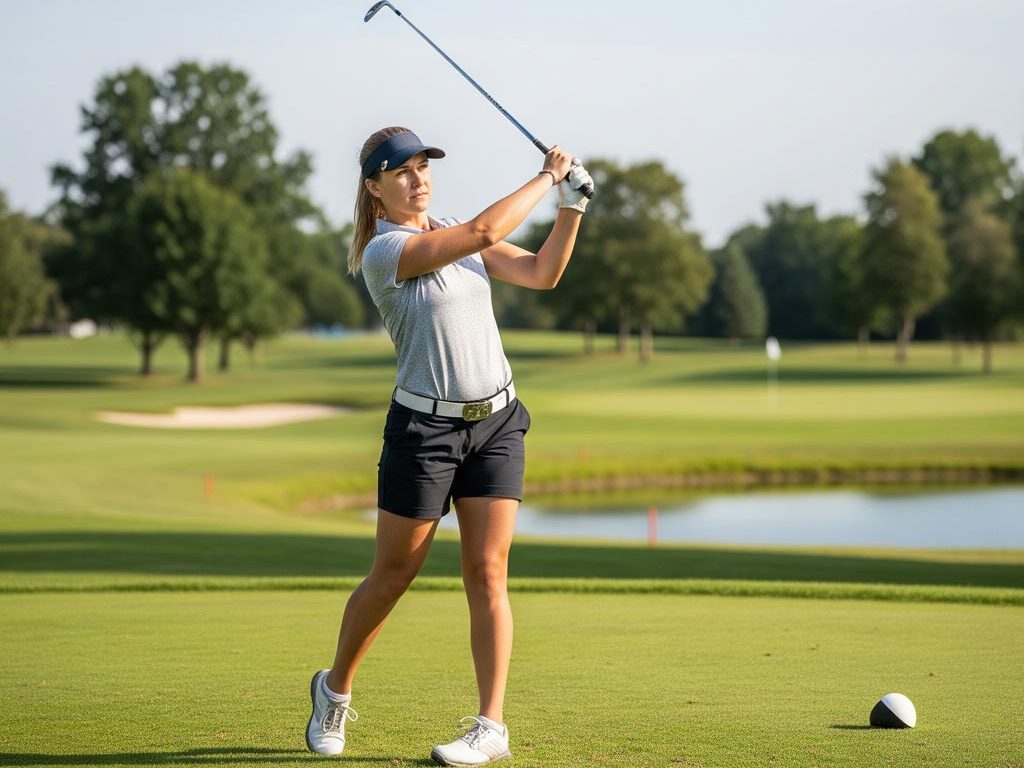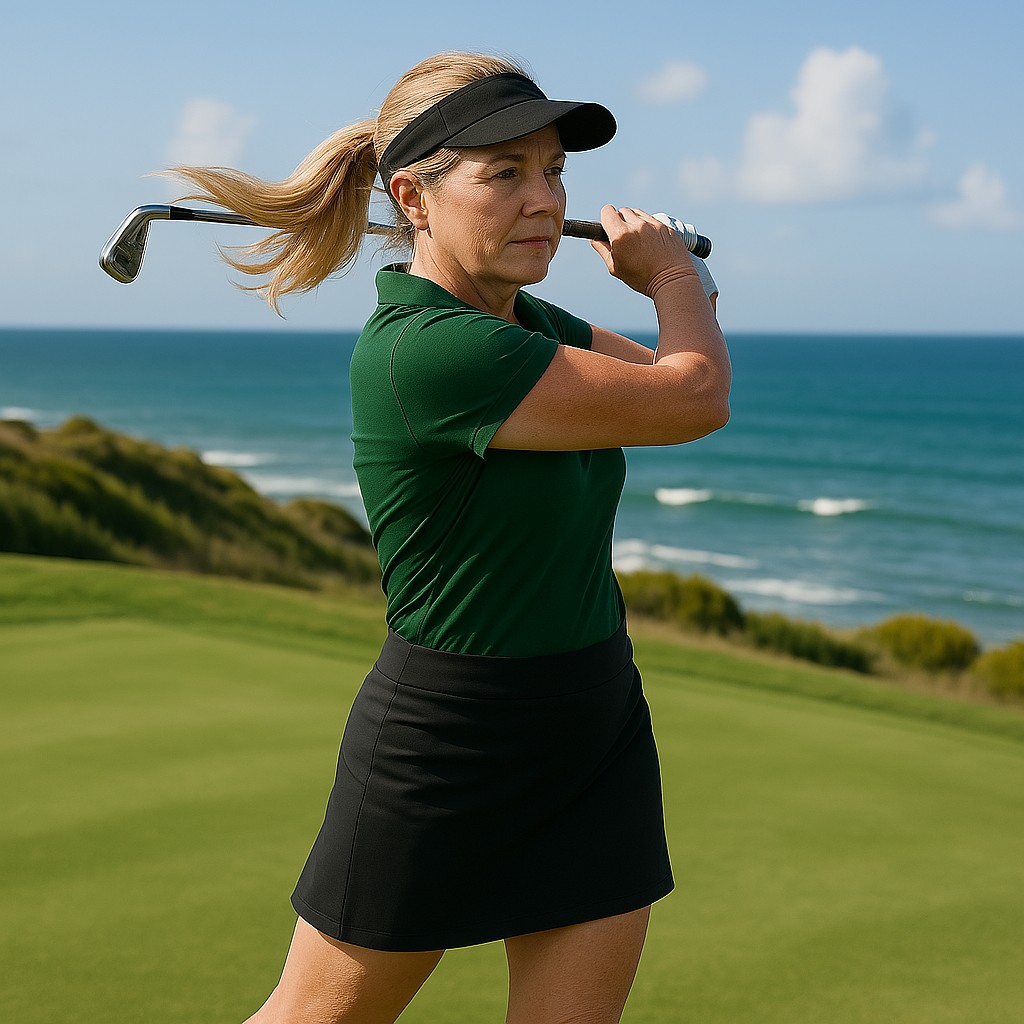Data-Driven Golf Improvement For Lady High-Handicappers

Golf is a journey, not a destination, and for many high-handicap lady golfers tracking stats, it’s a journey filled with both exhilarating moments and frustrating shots. You love the fresh air, the camaraderie, and the challenge, but sometimes those scores can feel a little disheartening. What if there was a way to make every round more enjoyable, less frustrating, and genuinely more rewarding? The secret lies in data-driven golf improvement, and it’s not just for the pros or the “boys’ club.” For high-handicappers, understanding your own Golf Course Intel is the fastest path to greater enjoyment and lower scores.
If you’re a female golfer consistently posting scores in the mid-90s to over 100, you’re in a fantastic position for significant improvement. You’ve got the basics down, you’re out on the course, and now it’s time to refine. This guide will provide you with the average benchmarks for high-handicap female golfers, showing you exactly where you stand and, more importantly, where to focus your efforts to unlock more consistent play and, ultimately, more fun.
Understanding the High-Handicap Female Golfer

Let’s define what it means to be a high-handicap golfer. This typically refers to a Handicap Index above 20, often ranging from 25 to 36 (the maximum allowed). If your scores are regularly in the mid-90s to over 100 on an 18-hole course, you fit right in. This is a common and exciting stage of golf development, as there’s immense potential for improvement.
High-handicappers often experience a mix of great shots and significant errors. You might hit a beautiful drive, only to follow it with a few mis-hits. Three-putts are common, and sometimes a lost ball can derail a hole. These inconsistencies are normal, but they also represent clear opportunities. By identifying these “problem areas” with data, you can transform frustration into targeted practice, leading to tangible improvements and a much more satisfying experience on the course.
Your Long Game: Distance, Accuracy, and Smart Choices
Your performance off the tee and with your longer clubs sets the tone for each hole. Understanding your average distances and how often you find the short grass is crucial for better course management and avoiding unnecessary trouble.
Driver Distance & Swing Speed

For the average high handicap lady golfer, your driver distance typically falls between 150-160 yards. If you’re in the 30-50 age bracket, this is a solid benchmark. Based on these distances, your estimated driver swing speed is likely in the 60-75 mph range.
While adding distance is always appealing, for high-handicappers, accuracy is often more valuable than power. Choosing a club off the tee that ensures your ball stays in play – even if it means hitting it a bit shorter – will save you more strokes than trying to bomb it and ending up in the woods or a hazard. A ball in the fairway, even if it’s 20 yards shorter, is a far better starting point for your next shot.
Fairways in Regulation (FIR)
How often do you hit the fairway with your tee shot? This is your Fairways in Regulation (FIR) percentage. For a 25-handicapper, the average is around 30% FIR, while a 36-handicapper might be closer to 20-25%. This means you’re missing the fairway more often than you’re hitting it.
This isn’t a critique, but an insight. It tells you that reducing major errors off the tee (like slices or hooks that lead to lost balls or penalty strokes) is a huge opportunity. Focus on a smooth swing that prioritizes getting the ball safely in play, even if it means using a 3-wood or hybrid instead of a driver on tighter holes.
Average Club Distances: Know Your Bag
Knowing how far you hit each club is a game-changer for course management. This isn’t about hitting it like a pro, but about knowing your numbers. Here’s a look at high handicap lady golfer stats:

| Club | Avg. Distance (Yards) |
| Driver | 150 |
| 3 Wood | 135 |
| 5 Wood | 125 |
| Hybrid | 125 |
| 3 Iron | 115 |
| 4 Iron | 105 |
| 5 Iron | 95 |
| 6 Iron | 85 |
| 7 Iron | 75 |
| 8 Iron | 65 |
| 9 Iron | 55 |
| Pitching Wedge | 45 |
| Gap Wedge | 40 |
| Sand Wedge | 35 |
| Lob Wedge | 30 |
Use this table as a starting point, but track your own distances! This intel will help you make smarter decisions on the course, leading to fewer frustrating shots and more confident swings.
Get Your Full Analysis and Put Your Data to Work For You
The Short Game: Your Fastest Path to Enjoyment
This is where the magic happens for high-handicappers. While hitting greens in regulation is tough, mastering the short game is the quickest way to shave strokes and boost your enjoyment.
Putts Per Round
For a high-handicap woman, average putts per round typically fall between 36 and 40. A 25-handicapper averages around 36 putts, while a 36-handicapper might be closer to 39-40.
A breakdown shows that for a 30-handicapper:

- 15-20% of holes are 1-putts.
- 50-55% are 2-putts.
- 25-30% are costly 3-putts or worse.
This means you’re likely averaging 5-6 three-putts per round. Imagine eliminating just two or three of those! That’s an immediate 2-3 stroke improvement, and it’s often much easier to achieve than gaining 20 yards on your drive. Focus on lag putting (getting the ball close from long range) and consistent short putts.
Greens in Regulation (GIR)
Greens in Regulation (GIR) means reaching the green in two shots less than par (e.g., on a par 4 in two shots). For a high-handicap female golfer, GIR percentages are quite low, ranging from 5% to 15%. A 25-handicapper hits about 10% of greens, and a 36-handicapper hits only about 5%.

Since you’ll miss most greens, your scrambling ability (getting the ball up and down from off the green) becomes incredibly important. Don’t just aim for the green; aim for a spot that gives you a good chance to chip or pitch it close, setting up an easy two-putt. Your focus should be on minimizing big numbers by getting the ball on or near the green and then getting it in the hole efficiently.
Strokes Gained: Your Personalized Practice Roadmap
“Strokes Gained” is a powerful statistic that compares every shot you hit to a benchmark (like a PGA Tour pro). Regarding high handicap lady golfer stats, these numbers will always be negative – and that’s okay! The real value is in pinpointing exactly where you’re losing the most strokes.
Looking at high handicap lady golfer stats, estimated Strokes Gained (vs. a pro) typically look like this:
| Handicap | SG Off the Tee | SG Approach | SG Around Green | SG Putting |
| 25 | -7.0 to -8.0 | -9.0 to -11.0 | -5.0 to -6.0 | -4.0 to -5.0 |
| 30 | -8.0 to -9.0 | -11.0 to -13.0 | -6.0 to -7.0 | -5.0 to -6.0 |
| 36 | -9.0 to -10.0 | -13.0 to -15.0 | -7.0 to -8.0 | -6.0 to -7.0 |

Notice that “Approach” and “Off the Tee” show larger negative numbers, meaning more strokes are lost in these areas. However, the short game (Around the Green and Putting) often offers the quickest and easiest opportunities for improvement. It’s generally simpler to eliminate a three-putt or hit a chip closer than it is to drastically improve your full swing. This data confirms it: focus on your short game for the fastest path to lower scores and more enjoyment!
Your Path to More Enjoyable Golf
Armed with this data-driven golf course intel, here’s how you can transform your game and boost your enjoyment:
- Start Tracking Your Stats: Use a simple app or even a pen and paper to record your putts, FIR, and GIR. Compare them to these benchmarks. This will reveal your unique “problem areas.”
- Prioritize Short Game Practice: Dedicate 70-80% of your practice time to putting, chipping, and pitching. Work on drills that help you eliminate three-putts and get the ball closer from around the green.
- Play Smarter, Not Harder: On the course, make strategic decisions. If a hole is tight, choose a club that guarantees a fairway hit. On approach shots, aim for the middle of the green, not necessarily the pin, to avoid trouble.
- Embrace the Process: Golf improvement is gradual. Celebrate the small victories – a two-putt from 30 feet, a great up-and-down, or a solid drive that finds the fairway. Every improvement, no matter how small, adds to your enjoyment.
- Consider a Tracking App: For the most precise insights, explore golf performance tracking apps like GolfPad, Shot Scope or Arccos. They can give you personalized Strokes Gained data, and GolfCourseIntel can utilize that data, showing you exactly where to focus your practice for maximum impact.
This post contains affiliate links. If you use these links to buy something, I may earn a commission at no extra cost to you. Thanks for your support!
By using data to understand your high handicap lady golfer stats, you’re not just playing golf; you’re playing smarter golf. This targeted approach will lead to more consistent shots, fewer frustrating mistakes, and ultimately, a much more enjoyable and rewarding experience every time you step onto the course.
Get your full analysis with one of our Fairway Fundamentals Strategy Guides and start putting your data from your shot tracker to work for you:




0 Comments